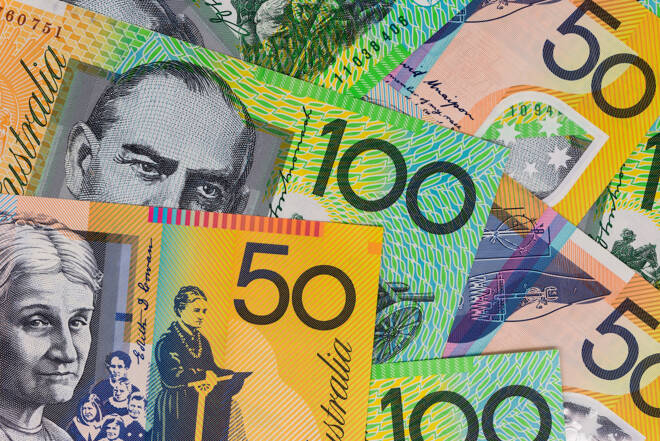Advertisement
Advertisement
AUD to USD Forecast: Australian Retail Sales Tumble 2.7% in December
By:
After the Australian retail sales figures, the focus will turn to US consumer confidence and labor market data that will impact the AUD/USD.
Highlights
- The AUD/USD gained 0.56% on Monday, ending the session at $0.66104.
- China stimulus measures and softer US inflation figures from Friday drove buyer demand for the AUD/USD.
- On Tuesday, Australian retail sales figures for December and the US economic calendar need consideration.
Monday Overview of the AUD/USD
The AUD/USD gained 0.56% on Monday. Reversing a 0.17% decline from Friday, the Australian dollar ended the session at $0.66104. The Australian dollar fell to a low of $0.65695 before rising to a high of $0.66157.
Aussie Retail Sales and the RBA in Focus
On Tuesday, Australian retail sales figures for December garnered investor interest. Retail sales tumbled by 2.7% after rising by 1.6% in November. Economists forecast retail sales to decline by 0.7% month-on-month.
According to the ABS,
- Food sales increased by 0.1%.
- Household goods and department store sales declined by 8.5% and 8.1%, respectively.
- Clothing, footwear, and personal accessory sales fell by 5.7%.
The larger-than-expected fall in retail sales could ease bets on an RBA interest rate hike in February. Downward consumer spending trends ease demand-driven inflation. However, Black Friday Sales in November skewed the numbers, with consumers making December purchases in the November sales.
In December, the RBA considered raising interest rates. However, uncertainty about household spending and softer inflation numbers allowed the RBA to consider another round of data. Sticky inflation numbers, out on Wednesday, could have more influence on the February 6 monetary policy decision.
US Economic Calendar: Consumer Confidence and JOLTs Job Openings
Later in the session, US consumer confidence and labor market data warrant investor attention. Economists forecast the CB Consumer Confidence Index to increase from 110.7 to 115.0 in January.
An improving consumer confidence environment could fuel consumer spending and demand-driven inflation. The Fed could delay the timing of an interest rate cut to impact spending and dampen demand-driven inflation.
However, investors must also consider labor market data. Economists predict JOLTs Job Openings to fall from 8.79 million to 8.75 million in December. A larger-than-expected fall could counter a jump in consumer confidence.
Beyond the headline figure, investors must consider quit rates. Downward quit rate trends could signal a deteriorating labor market. Workers are less likely to quit jobs in a weaker labor market environment. Economists forecast job quits to fall from 3.471 million to 3.450 million.
Short-Term Forecast
Near-term AUD/USD trends remain hinged on Australian inflation figures and the Fed. Sticky inflation could fuel bets on an RBA rate hike. Monetary policy divergence could tilt toward the Aussie dollar before the Fed interest rate decision (Wed).
AUD/USD Price Action
Daily Chart
The AUD/USD sat below the 50-day EMA while holding above the 200-day EMA, sending bearish near-term but bullish longer-term price signals.
An AUD/USD break above the $0.66162 resistance level and the 50-day EMA would give the bulls a run at the $0.66500 handle.
Australian retail sales, China stimulus news, US consumer confidence, and JOLTs job openings need consideration.
However, a fall through the 200-day EMA and the $0.65500 handle would bring the $0.64900 support level into play.
A 14-period Daily RSI reading of 45.67 indicates an AUD/USD break below the $0.65 handle before entering oversold territory.
4-Hourly Chart
The AUD/USD hovered above the 50-day EMA while remaining below the 200-day EMA, sending bullish near-term but bearish longer term price signals.
An AUD/USD breakout from the $0.66162 resistance level would bring the 200-day EMA and $0.66500 handle into play.
However, a fall through the 50-day EMA would give the bears a run at the $0.64900 support level.
The 14-period 4-Hourly RSI at 55.73 suggests an AUD/USD return to the $0.66500 handle before entering overbought territory.
About the Author
Bob Masonauthor
With over 28 years of experience in the financial industry, Bob has worked with various global rating agencies and multinational banks. Currently he is covering currencies, commodities, alternative asset classes and global equities, focusing mostly on European and Asian markets.
Advertisement
